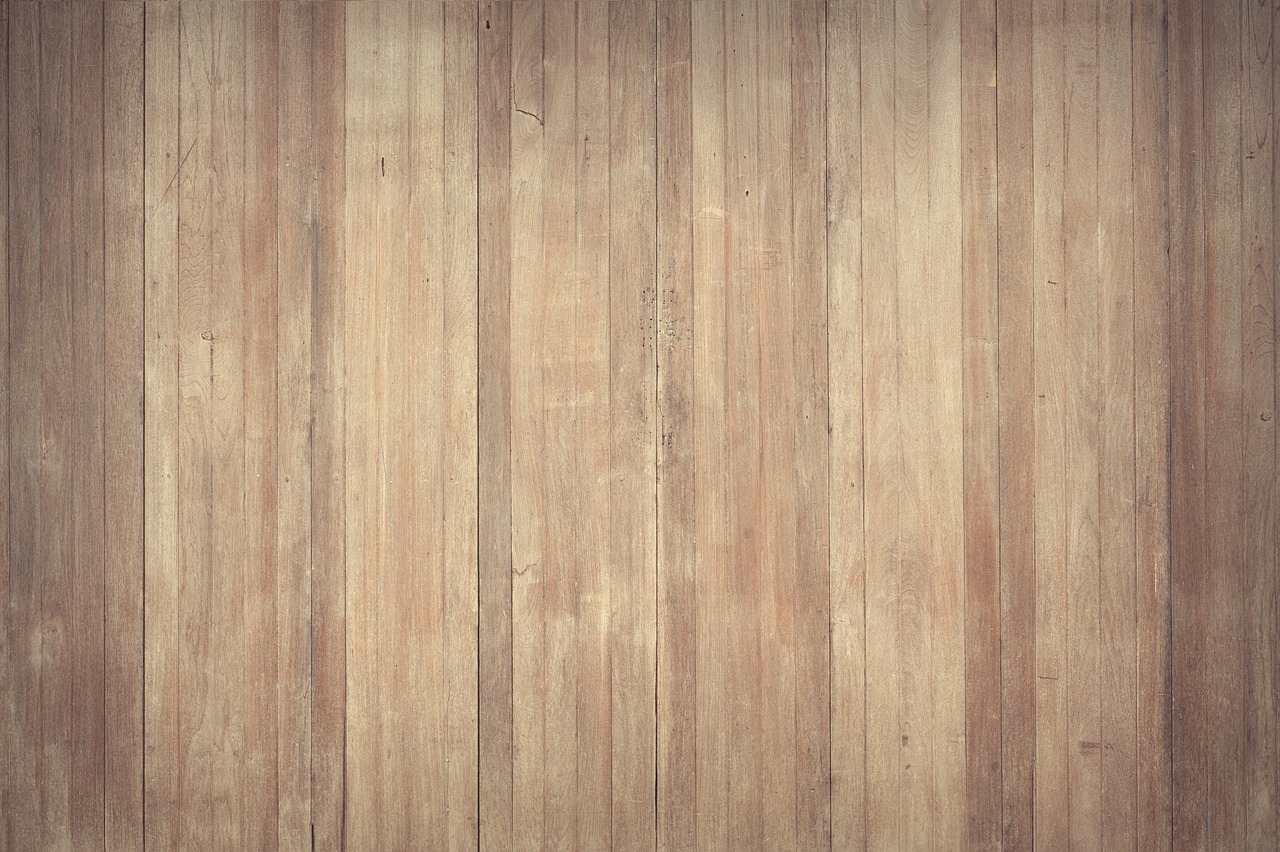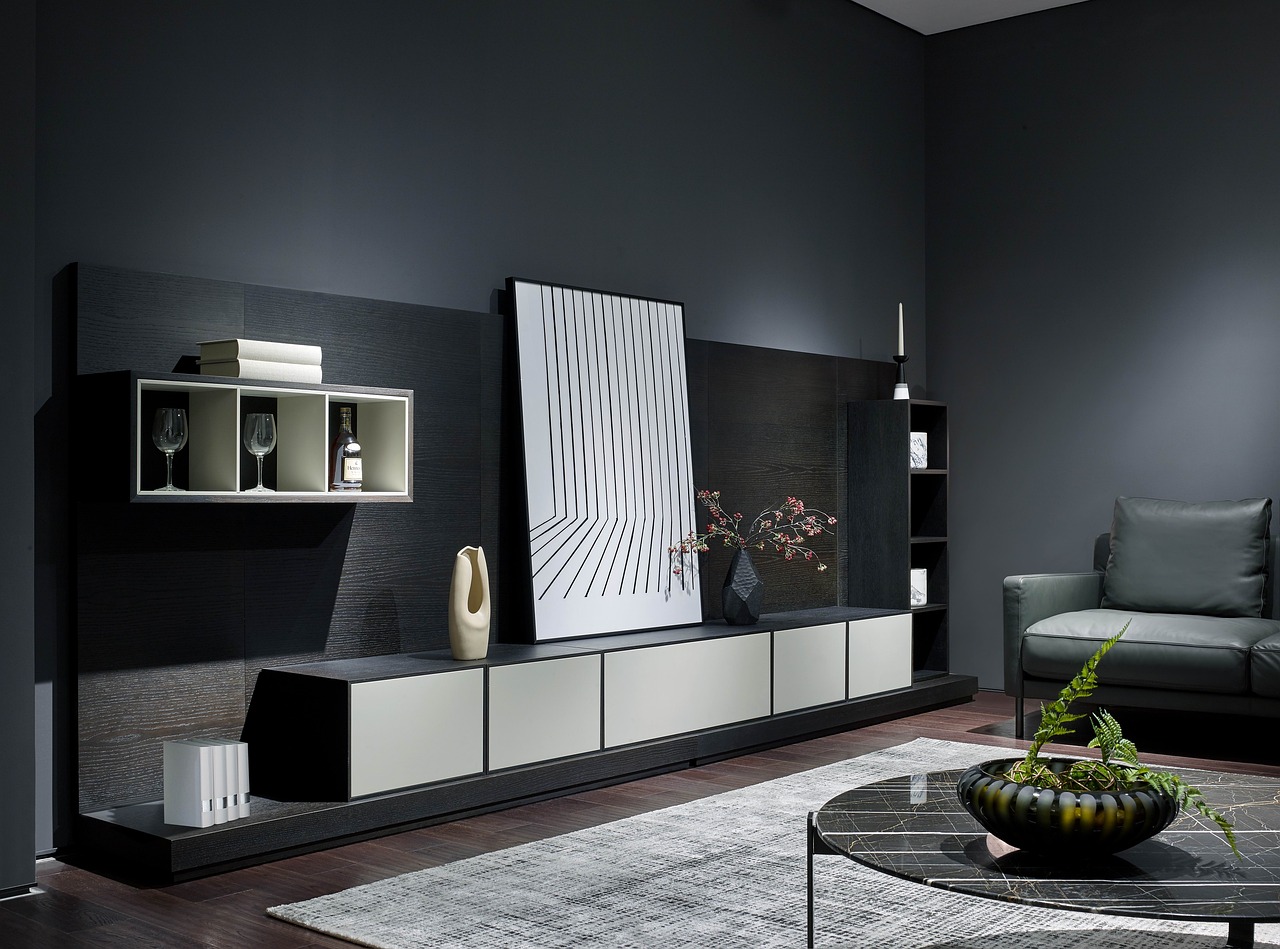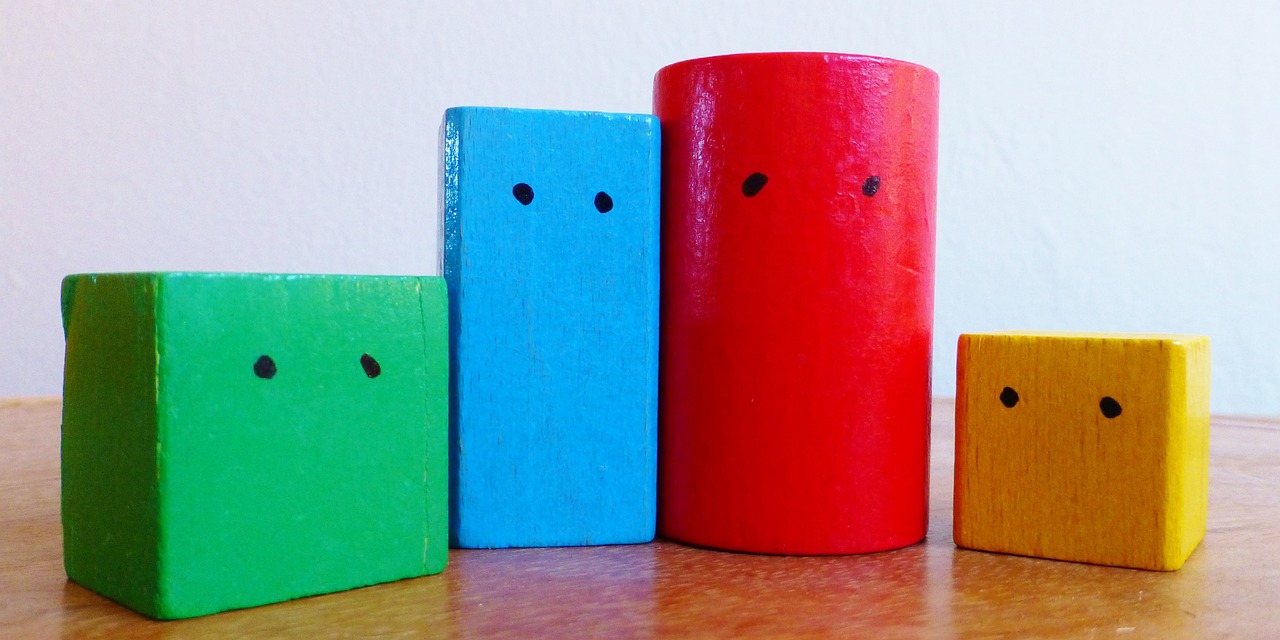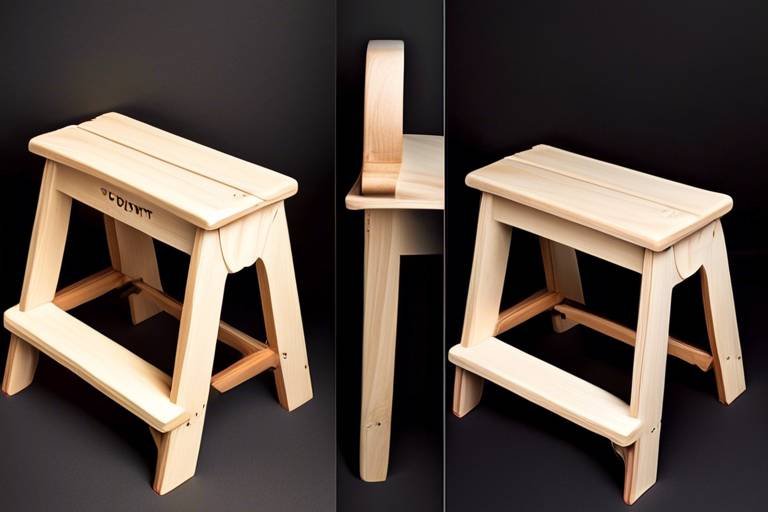Designing a Solid Wood Study Desk: A Blueprint
In today's fast-paced world, having a dedicated workspace can significantly enhance productivity and focus. A solid wood study desk not only serves as a functional piece of furniture but also adds a touch of elegance to your home or office. This article provides a comprehensive guide on creating a solid wood study desk, covering design considerations, materials, construction techniques, and tips for achieving a functional and aesthetically pleasing workspace. Whether you're a student, a remote worker, or a creative professional, designing your perfect study desk can be a rewarding project that combines both craftsmanship and personal style.
Selecting the appropriate wood type is crucial for durability and aesthetics. The right choice of wood can transform your study desk from a simple work surface to a stunning centerpiece. Popular options include oak, maple, and walnut, each with its own unique characteristics. Oak is known for its strength and beautiful grain, making it a popular choice for sturdy furniture. Maple, on the other hand, is lighter and has a fine, even texture that can be stained or left natural. Walnut boasts rich tones and a luxurious appearance, perfect for those looking to make a statement. When choosing wood, consider factors such as your budget, the desk's intended use, and how it will fit with your existing decor.
When designing a study desk, various factors come into play, including size, shape, and functionality. It's essential to visualize the space where your desk will reside and how it will be used. Will you need ample surface area for multiple monitors, or is a compact design more suitable for your needs? Additionally, consider the shape of the desk; a traditional rectangular desk might work for some, while others may prefer a corner desk to maximize space. Ultimately, the design should reflect your personal style while also meeting your practical needs.
A well-designed desk should promote good posture and comfort. Ergonomics is all about creating a workspace that reduces strain on your body, especially during long study sessions. Consider the height of your desk in relation to your chair and monitor. Your elbows should be at a 90-degree angle when typing, and your feet should rest flat on the floor. To enhance comfort, think about adding a footrest or an adjustable chair. Remember, a comfortable workspace can significantly boost your productivity and overall well-being.
Understanding the ideal desk height and dimensions is vital for comfort. Generally, a standard desk height ranges from 28 to 30 inches from the floor. However, this can vary based on your height and preferences. To find the best fit, consider measuring from the floor to your elbow while seated; this can guide you in adjusting your desk to fit your body perfectly. Additionally, the desk's depth and width should allow for adequate space for your computer, books, and other materials without feeling cramped.
Incorporating storage into your desk design can enhance functionality. No one likes a cluttered workspace, and having organized storage can help maintain focus. Consider options such as drawers, shelves, or even a side cabinet. Here are a few ideas to keep your workspace tidy:
- Drawers: Perfect for storing stationery, documents, and personal items.
- Open Shelves: Great for displaying books or decorative items while keeping essentials within reach.
- Cabinets: Ideal for larger items or if you need to hide away the clutter.
By thoughtfully integrating these storage solutions, you can create a workspace that is both functional and visually appealing.
The visual appeal of your study desk can enhance your workspace ambiance. After all, a desk that looks good can inspire creativity and motivation. When choosing a style, think about your existing decor. Are you drawn to a modern minimalist look, or do you prefer a rustic charm? The finish of the wood can also significantly affect the overall aesthetic. From a natural finish that showcases the wood's grain to a sleek, painted surface, the options are endless. Don't be afraid to experiment with different styles to find what resonates with you.
Building a solid wood study desk involves specific techniques and tools. Understanding these methods is essential to ensure your desk is sturdy and well-crafted. Whether you're a seasoned woodworker or a beginner, there are various construction techniques to consider that can elevate your project.
Joinery plays a critical role in the strength of your desk. Using the right joinery techniques can make a significant difference in durability and appearance. Some popular methods include:
- Dovetail Joints: Known for their strength and aesthetic appeal, these joints are often used in drawer construction.
- Mortise-and-Tenon Joints: A classic technique that provides exceptional strength, ideal for connecting legs to the tabletop.
Selecting the appropriate joinery method will depend on your design and the tools available to you.
The final finish can significantly impact the desk's appearance and durability. Sanding, staining, and sealing your solid wood study desk are crucial steps in the construction process. Begin by sanding the surface to create a smooth finish, then apply a stain to enhance the wood's natural beauty. Finally, seal the desk with a protective finish to guard against scratches and spills. This not only prolongs the life of your desk but also gives it a professional look that you can be proud of.
Q: What type of wood is best for a study desk?
A: Popular choices include oak for its durability, maple for its fine grain, and walnut for its rich color. The best option depends on your style and budget.
Q: How do I determine the right height for my desk?
A: A standard desk height is typically between 28 to 30 inches. Measure from the floor to your elbow while seated for a personalized fit.
Q: What storage solutions should I consider?
A: Drawers, open shelves, and cabinets are excellent options to keep your workspace organized and clutter-free.

Choosing the Right Wood
When it comes to crafting a solid wood study desk, is one of the most critical decisions you'll make. It’s not just about aesthetics; the type of wood you select can significantly affect the durability, weight, and overall feel of your desk. Imagine sitting at a desk that not only looks stunning but also stands the test of time! So, let’s dive into the most popular wood options and help you find the perfect match for your workspace.
First off, let's talk about hardwoods and softwoods. Hardwoods, such as oak, maple, and walnut, are typically denser and more durable, making them ideal for furniture that needs to withstand daily use. For instance, oak is renowned for its strength and beautiful grain patterns, while walnut offers a rich, dark hue that adds a touch of elegance to any room. On the other hand, softwoods like pine and cedar are lighter and often more affordable, making them a great choice for those on a budget or for projects that don’t require heavy-duty materials.
Here’s a quick overview of some popular wood types you might consider:
| Wood Type | Characteristics | Best For |
|---|---|---|
| Oak | Strong, durable, with a prominent grain | High-traffic areas, long-lasting furniture |
| Maple | Hard, smooth finish, light color | Modern designs, sturdy desks |
| Walnut | Rich color, luxurious appearance | Elegant spaces, statement pieces |
| Pine | Lightweight, affordable, easy to work with | Budget-friendly projects, casual styles |
| Cedar | Natural resistance to decay, aromatic | Outdoor furniture, rustic designs |
Now that you have a glimpse of the wood options, how do you decide which one is best for your study desk? Start by considering your personal style and the overall theme of your workspace. If you’re going for a classic look, hardwoods like oak or walnut might be your best bet. However, if you prefer a more casual or rustic vibe, softwoods like pine or cedar can provide that warmth and charm.
Another factor to keep in mind is maintenance. Hardwoods usually require more care in terms of finishing and can be more expensive, but they offer longevity that is worth the investment. Softwoods, while easier on the wallet, may need more frequent refinishing to maintain their appearance over time. Think about how much time and effort you’re willing to put into your desk's upkeep.
In conclusion, choosing the right wood for your study desk is a blend of personal preference, functionality, and maintenance considerations. Take your time to explore the options, and don’t hesitate to visit local lumberyards or furniture stores to see and feel the wood types firsthand. After all, this desk will be your companion for many study sessions to come!
Q: What is the best wood for a study desk?
A: The best wood depends on your needs, but hardwoods like oak and walnut are excellent for durability, while softwoods like pine can be budget-friendly.
Q: How do I maintain my solid wood desk?
A: Regular dusting, occasional polishing, and applying a protective finish can help maintain your desk's appearance and longevity.
Q: Can I mix different types of wood in my desk design?
A: Absolutely! Mixing wood types can create a unique look, just ensure they complement each other in color and texture.

Desk Design Considerations
When it comes to crafting your perfect study desk, the design considerations are as crucial as the materials you choose. Think of your desk as the stage where your productivity plays out; every element must work harmoniously to create an environment that fosters focus and creativity. So, what should you keep in mind while designing your desk? Let's dive in!
First and foremost, size matters. The dimensions of your desk should complement your workspace while providing ample room for your essentials—think books, laptops, and maybe even a coffee cup or two. Imagine trying to work in a cramped space; it’s like trying to dance in a phone booth! Measure your area and consider how much surface area you truly need. A desk that’s too small can lead to frustration, while one that’s too large can overwhelm the room.
Next up is the shape of your desk. Do you want a traditional rectangular desk, or are you leaning towards a more modern L-shaped design? Each shape has its own benefits. For instance, an L-shaped desk can maximize corner space, providing you with additional room for monitors or decorative items. On the other hand, a rectangular desk can fit snugly against a wall, making it a great option for smaller rooms. Consider your workflow and how you like to organize your materials; this will guide your choice.
Another critical aspect is functionality. Your desk should not only look good but also serve your needs effectively. Will you be using it primarily for writing, or will it double as a computer workstation? If you’re a multi-tasker, you might want to incorporate features like adjustable heights or built-in charging stations. Think of your desk as a Swiss Army knife; the more tools it has, the more versatile it becomes.
Moreover, let’s not forget about ergonomics. A well-designed desk promotes good posture and comfort, which is vital for long study sessions. After all, no one wants to feel like they’ve been wrestling with a pretzel after a few hours of work! Pay attention to the desk height and your chair’s height to ensure that your elbows are at a 90-degree angle when typing. This simple adjustment can make a world of difference in your comfort level.
Incorporating ergonomic principles into your desk design is crucial for maintaining comfort and efficiency. You want to avoid the dreaded back pain that comes from slouching over your work for hours on end. A good rule of thumb is to aim for a desk height of about 28 to 30 inches, but this can vary based on your own height and chair. Don’t hesitate to adjust your setup until it feels just right. Remember, comfort is key, and investing in your workspace is investing in your productivity!
Understanding the ideal desk height is vital for comfort. A desk that’s too high or too low can lead to discomfort and strain. As mentioned earlier, a typical desk height is between 28 and 30 inches, but if you’re on the taller side, you might want to go for something a bit higher. A simple formula to find your ideal desk height is to measure your elbow height while seated and subtract about 1 to 2 inches. This will ensure that you’re sitting comfortably without straining your arms or back.
Let’s talk about storage! A well-organized workspace is a happy workspace. Incorporating storage solutions into your desk design can help you keep everything in its place. Think about adding drawers for stationery, shelves for books, or even a small file cabinet for important documents. A clutter-free desk is like a clean canvas; it allows your creativity to flow without distractions. You could also consider vertical storage options if space is tight. Remember, the goal is to create a workspace that inspires you!
In conclusion, designing your study desk is about more than just aesthetics; it’s about creating a functional, comfortable, and inspiring workspace. By considering size, shape, functionality, ergonomics, and storage, you can craft a desk that not only meets your needs but also enhances your overall study experience. So, roll up your sleeves and let your creativity shine as you embark on this exciting project!
- What wood is best for a study desk? - Hardwoods like oak, maple, and walnut are excellent choices for durability and aesthetics.
- How do I ensure my desk is ergonomic? - Adjust the height so your elbows are at a 90-degree angle while typing, and ensure your monitor is at eye level.
- What storage solutions should I consider? - Drawers for stationery, shelves for books, and vertical storage can help keep your workspace organized.

Ergonomics and Comfort
When it comes to designing your solid wood study desk, ergonomics and comfort are paramount. Imagine spending hours hunched over your workspace; not only does it feel uncomfortable, but it can also lead to long-term health issues. So, how can you ensure that your desk design promotes a healthy and productive environment? It's all about creating a workspace that works for you, not against you.
First off, let’s talk about the importance of posture. A well-designed desk should encourage good posture, which means your back should be straight, your shoulders relaxed, and your feet flat on the ground. To achieve this, consider the height of your desk and the chair you’ll be using. Ideally, your elbows should be at a 90-degree angle when typing, which leads us to the next crucial element: desk height.
According to ergonomic standards, the ideal desk height for most people is between 28 to 30 inches from the ground. However, everyone is different, and you might need to make adjustments based on your height. A quick way to find your perfect desk height is to sit comfortably in your chair and measure from the floor to your elbows. If your desk is too high or too low, it can lead to discomfort and strain over time.
Another aspect to consider is the depth and width of your desk. A desk that is too shallow may not provide enough space for your monitor and other essentials, while one that is too deep can force you to reach uncomfortably. Aim for a desk that is at least 24 inches deep and 48 inches wide to give yourself ample space to work without feeling cramped.
Additionally, don't overlook the importance of chair selection. A good chair can make all the difference in your comfort level. Look for chairs that offer lumbar support, adjustable heights, and a comfortable seat cushion. You might even want to invest in an ergonomic chair that supports your back and encourages good posture. Remember, a comfortable chair can enhance your productivity and help you focus better on your tasks.
Lastly, consider incorporating accessories that promote comfort and reduce strain. For instance, a keyboard tray can help position your keyboard at the right height, while a monitor stand can elevate your screen to eye level, preventing neck strain. By integrating these elements into your design, you create a workspace that not only looks great but also feels great.
In summary, when designing your solid wood study desk, prioritize ergonomics and comfort. By focusing on desk height, chair selection, and the right accessories, you can create a workspace that supports your body and boosts your productivity. After all, a comfortable workspace is a happy workspace!
- What is the best height for a study desk? The ideal height is typically between 28 to 30 inches, but it may vary based on individual needs.
- How can I ensure my desk is ergonomic? Focus on maintaining a straight posture, using an adjustable chair, and positioning your monitor at eye level.
- What materials are best for a study desk? Solid wood is a great choice for durability and aesthetics, but consider your personal style and budget as well.

Height and Dimensions
When it comes to designing your solid wood study desk, are not just numbers on a tape measure; they play a crucial role in your overall comfort and productivity. Imagine sitting at your desk, your feet dangling awkwardly or your shoulders hunched over your keyboard. Not a pretty picture, right? Finding the right height and dimensions is essential to create a workspace that feels just right, like a well-fitted glove.
The ideal desk height typically ranges between 28 to 30 inches from the floor to the top of the desk. However, this can vary based on your own height and the type of chair you plan to use. For instance, if you're on the taller side, you might find that a desk height of 30 inches works best, while shorter individuals may prefer something closer to 28 inches. But don't just take my word for it—try sitting at different heights to see what feels comfortable for you. Your knees should have enough clearance underneath the desk, and your elbows should form a 90-degree angle when typing.
Now, let’s talk about the depth and width of your desk. A standard depth of 24 to 30 inches is often recommended. This gives you enough space for your computer, books, and maybe even a cup of coffee (because let’s be honest, we all need that caffeine boost). As for the width, a minimum of 48 inches is advisable, especially if you plan to spread out your materials or work with multiple monitors. If space allows, going wider can add to your comfort and functionality.
To help you visualize these measurements, here’s a simple table that summarizes the ideal dimensions:
| Dimension | Recommended Range |
|---|---|
| Height | 28 - 30 inches |
| Depth | 24 - 30 inches |
| Width | 48 inches (minimum) |
Another crucial aspect to consider is the clearance under the desk. You want enough room to stretch your legs and avoid that cramped feeling that can lead to discomfort during long study sessions. A clearance of at least 24 inches is generally recommended. This ensures that you can sit comfortably without feeling restricted.
Finally, don’t forget to take into account the overall layout of your room. If your desk is too large for your space, it can make the room feel cramped and chaotic. On the other hand, a desk that’s too small may not provide the functionality you need. Finding that perfect balance is key to creating a workspace that inspires focus and creativity. So, before you start building, measure your space and visualize how your new desk will fit into your study area.

Storage Solutions
When it comes to designing a solid wood study desk, are not just an afterthought; they are a crucial element that can transform your workspace from chaotic to organized. Imagine sitting down to study, only to be greeted by a sea of clutter. Frustrating, right? That's why incorporating effective storage options into your desk design can make a significant difference in both functionality and your overall productivity.
First and foremost, consider the types of items you'll need to store. Will you have books, stationery, or perhaps a laptop and various tech gadgets? Understanding your storage needs will help you choose the right features for your desk. For example, a desk with built-in drawers can be a lifesaver for keeping your essentials within arm's reach, while open shelves can display your favorite books or decorative items, adding a personal touch to your workspace.
Here are some popular storage solutions to consider:
- Drawers: These are perfect for hiding away clutter. Opt for deep drawers for larger items and smaller ones for stationery.
- Shelves: Open shelves can keep your books and supplies visible and easily accessible, creating a nice display.
- Cubbies: Great for organizing smaller items, cubbies can keep everything from notebooks to chargers neatly stored.
- Keyboard trays: If you're using a computer, a pull-out keyboard tray can free up desk space and create a cleaner look.
Moreover, think about the layout of your storage. A well-structured desk should have a balance of open and closed storage. This not only helps in keeping the workspace tidy but also allows you to showcase your personality through decorative items. For instance, you might want to keep your favorite books on display while storing less attractive items out of sight.
It's also worth considering the materials for your storage solutions. Solid wood offers durability and a classic look, but combining it with metal or glass can add a modern twist to your design. The finish of the wood can also play a role in how the storage solutions blend with your overall aesthetic. A rich walnut finish, for example, can impart warmth, while a lighter oak can create a more contemporary feel.
In conclusion, effective storage solutions are essential for a well-designed study desk. By carefully considering what you need to store and how you want your workspace to look, you can create a functional and stylish environment that enhances your productivity and makes studying a more enjoyable experience.
Q1: What is the best type of wood for a study desk?
A1: The best type of wood depends on your budget and aesthetic preference. Hardwoods like oak, maple, and walnut are durable and provide a beautiful finish.
Q2: How much storage space do I need in my study desk?
A2: It varies based on your personal needs. Consider what items you use most frequently and plan your storage accordingly. A combination of drawers and shelves is often ideal.
Q3: Can I customize my desk storage?
A3: Absolutely! Many furniture makers offer customizable options, allowing you to design a desk that fits your specific storage needs and style preferences.
Q4: How can I keep my desk organized?
A4: Regularly declutter, use organizers for small items, and ensure everything has a designated spot. This will help maintain an organized workspace.

Style and Aesthetics
When it comes to designing your solid wood study desk, are just as important as functionality. After all, this is a space where you will spend countless hours, so why not make it visually appealing? The style of your desk can set the tone for your entire workspace, influencing not just your mood but also your productivity. Think of your desk as the centerpiece of your study area, akin to a canvas that reflects your personality and taste.
Choosing the right style involves considering your existing decor and the ambiance you wish to create. For instance, if your home features a modern aesthetic, a sleek, minimalist desk with clean lines and a natural finish might be the perfect fit. On the other hand, if your space leans towards a more traditional or rustic vibe, a desk with ornate carvings and a rich, dark stain could enhance that warmth. The key is to ensure your desk complements the overall theme of your room.
Additionally, the finish of your desk plays a crucial role in its visual appeal. A well-applied finish can enhance the natural beauty of the wood, highlighting its unique grain and texture. Here are some popular finishes to consider:
- Natural Oil Finish: This option penetrates the wood, enhancing its natural beauty while providing a soft sheen.
- Polyurethane: A durable finish that offers a high-gloss look, making it ideal for modern styles.
- Stain: Stains come in various colors, allowing you to customize the hue while still showcasing the wood grain.
Moreover, don’t forget about the hardware you choose for your desk. Handles, knobs, and hinges can significantly impact the overall look. Opting for brass or wrought iron can add a touch of elegance, while sleek stainless steel can enhance a contemporary feel. Remember, every detail counts!
Finally, consider how your desk interacts with the lighting in the room. Natural light can highlight the beauty of the wood, while well-placed lamps can create a cozy atmosphere. Think about how shadows and light will play across your desk surface throughout the day, and arrange your workspace accordingly.
In summary, the style and aesthetics of your solid wood study desk are integral to creating a workspace that inspires creativity and focus. By thoughtfully selecting the design, finish, and hardware, you can craft a desk that not only serves its purpose but also adds a beautiful touch to your environment. So, take your time in choosing these elements, and remember: your desk is more than just a piece of furniture; it's a reflection of you!
Q1: What type of wood is best for a study desk?
A1: The best type of wood depends on your style and budget. Popular choices include oak for durability, walnut for richness, and pine for affordability.
Q2: How can I maintain the finish of my solid wood desk?
A2: Regular dusting and occasional polishing will help maintain your desk's finish. Avoid using harsh chemicals that can damage the wood.
Q3: What are some ergonomic considerations for desk height?
A3: Ideally, your desk height should allow your elbows to be at a 90-degree angle while typing. Consider adjustable desks if multiple users will be using it.
Q4: Can I customize my desk design?
A4: Absolutely! You can design your desk to fit your specific needs, including size, shape, and storage options.

Construction Techniques
Building a solid wood study desk is not just about picking the right wood and design; it’s about employing the right to ensure durability and functionality. The process can be both thrilling and daunting, akin to piecing together a puzzle where each piece must fit perfectly to reveal a beautiful picture. In this section, we'll delve into the essential methods and tools you'll need to craft a desk that not only looks stunning but also stands the test of time.
First and foremost, understanding the various joinery methods is crucial. Joinery refers to the techniques used to connect different pieces of wood. The strength and longevity of your desk heavily depend on these connections. For instance, the dovetail joint is a classic choice for drawers due to its resistance to being pulled apart. Meanwhile, the mortise-and-tenon joint is often used for assembling the legs and the tabletop, providing a solid and stable connection. Here’s a brief overview of some popular joinery techniques:
| Joinery Technique | Description | Best Use |
|---|---|---|
| Dovetail Joint | A joint formed by interlocking wedge-shaped elements. | Drawers and boxes |
| Mortise-and-Tenon Joint | A method where a protruding tenon fits into a mortise hole. | Legs and tabletops |
| Box Joint | Similar to dovetail but with square-cut pins. | Box construction |
Once you have a grasp on joinery, the next step is to focus on the tools you’ll need. Investing in quality tools can make a world of difference. Essential tools include a table saw for cutting large sheets of wood, a router for shaping edges, and a chisel set for precise joinery work. Additionally, having a reliable clamp set is vital for holding pieces together as the glue dries, ensuring a tight fit.
Now, let’s talk about the finishing touches. After assembling your desk, the way you finish it can elevate its beauty and protect it from wear and tear. Start with sanding the surface to achieve a smooth finish. This is akin to polishing a gem; the more effort you put into it, the more it shines. Once sanded, you can choose to apply a stain to enhance the wood’s natural grain or paint it for a more personalized touch. Finally, sealing the desk with a protective coat of polyurethane will ensure it withstands the rigors of daily use while maintaining its aesthetic appeal.
Remember, building your own study desk is not just a project; it’s an opportunity to express your creativity and craftsmanship. It requires patience and attention to detail, but the satisfaction of creating something functional and beautiful is worth every minute spent. So roll up your sleeves, grab your tools, and let’s get crafting!
- What type of wood is best for a study desk? - Hardwoods like oak, maple, and cherry are excellent choices for durability and aesthetics.
- How do I ensure my desk is ergonomic? - The desk height should allow your elbows to be at a 90-degree angle when typing, and the top surface should be at or just below your elbow height.
- What finish is best for a wooden desk? - A polyurethane finish offers excellent protection while highlighting the wood's natural beauty.

Joinery Methods
When it comes to building a solid wood study desk, the strength and durability of the construction are paramount. One of the most critical aspects of this process is the choice of joinery methods. Joinery not only affects the structural integrity of the desk but also influences its aesthetic appeal. Think of joinery as the backbone of your desk—without a strong backbone, even the most beautifully designed desk can falter.
There are several popular joinery techniques that woodworkers often use, each with its unique advantages and applications. Understanding these methods can help you select the best one for your project. Here are some of the most common joinery methods:
- Dovetail Joints: Renowned for their strength and resistance to being pulled apart, dovetail joints are often used in drawer construction. These joints create a beautiful interlocking pattern that not only looks great but also provides exceptional durability.
- Mortise and Tenon: This classic joinery method involves inserting a tenon (a protruding piece of wood) into a mortise (a hole cut into another piece). This technique is widely used in furniture making, providing a strong and stable connection.
- Box Joints: Similar to dovetail joints but simpler to create, box joints are often used in box construction. They offer a good amount of strength and are visually appealing, making them a popular choice for drawer sides.
- Lap Joints: In lap joints, two pieces of wood overlap each other. This method is straightforward and can provide a decent amount of strength, especially in areas where the desk doesn’t bear much weight.
Each of these methods has its place in the construction of a study desk, depending on the desired aesthetic and functional requirements. For instance, if you want a desk that will stand the test of time, you might lean towards the mortise and tenon method due to its superior strength. On the other hand, if you're looking for a visually striking feature, dovetail joints could be the way to go.
Moreover, the choice of joinery can also affect how you approach the finishing touches of your desk. For example, with dovetail joints, the exposed ends can be sanded and finished to highlight the craftsmanship, adding an extra layer of elegance to your piece.
In conclusion, selecting the right joinery method is essential for creating a solid wood study desk that is both functional and visually appealing. Take your time to consider the options available, and choose the one that aligns with your design vision and practical needs. Remember, the integrity of your desk begins at the joints!
Q: What is the best joinery method for a beginner?
A: For beginners, lap joints or box joints are recommended due to their simplicity and ease of execution. These methods do not require specialized tools and can be achieved with basic woodworking skills.
Q: Are dovetail joints difficult to make?
A: Dovetail joints can be challenging for beginners, as they require precision and practice. However, with the right tools and patience, they can be mastered over time, providing beautiful results.
Q: Can I use screws instead of joinery methods?
A: While screws can provide a quick solution, they do not offer the same strength and aesthetic appeal as traditional joinery methods. For a solid wood desk, it's best to use joinery techniques for durability.

Finishing Touches
When it comes to crafting your solid wood study desk, the are what truly elevate your piece from ordinary to extraordinary. Think of finishing as the cherry on top of a delicious sundae—it not only enhances the appearance but also protects your investment. The right finish can bring out the natural beauty of the wood, highlight its grain, and ensure that your desk withstands the test of time. So, how do you achieve that perfect finish? Let’s dive into the essentials!
First, you'll want to start with sanding. This is a crucial step that prepares the wood for finishing. Begin with a coarse-grit sandpaper to remove any rough spots and imperfections. Gradually move to finer grits, finishing with at least 220-grit sandpaper. This process will leave your surface smooth and ready for the next stage. Remember, taking your time with sanding will pay off in the long run, so don’t rush!
Once you’ve achieved a smooth surface, it’s time to choose your stain. The choice of stain can dramatically change the look of your desk. Whether you prefer a light, natural finish that showcases the wood’s grain or a darker hue for a more dramatic effect, the stain will set the tone for your entire workspace. Apply the stain with a brush or cloth, following the wood grain, and allow it to penetrate for a few minutes before wiping off the excess. This method will help you achieve an even color throughout.
After staining, the next step is sealing. A good sealant protects your desk from moisture, scratches, and general wear and tear. Polyurethane is a popular choice due to its durability and resistance to water. You can opt for either a glossy or matte finish, depending on your preference. Apply at least two coats, allowing adequate drying time between applications. A light sanding between coats can also help achieve a smoother finish.
Lastly, let’s not forget about the final touches. Once your desk is fully dried and cured, consider adding some protective pads under the legs to prevent scratching your floor. You might also want to think about incorporating a few personal touches, like decorative accessories or a stylish desk lamp, to make your workspace feel more inviting.
1. How long does it take for the finish to dry?
Drying times can vary based on the type of finish used, but generally, you should allow at least 24 hours for each coat to dry.
2. Can I change the finish later if I don’t like it?
Yes, you can sand down the existing finish and apply a new stain or sealant. However, this process can be time-consuming, so it’s best to choose wisely from the start!
3. Is it necessary to use a primer before staining?
While a primer is not necessary for all types of wood, it can help achieve a more uniform color, especially on softer woods that absorb stain unevenly.
4. What’s the best way to clean my finished desk?
Use a soft, damp cloth to wipe down your desk. Avoid harsh chemicals that can damage the finish. A mixture of mild soap and water works well for deeper cleaning.
Frequently Asked Questions
- What type of wood is best for a study desk?
Choosing the right wood for your study desk is essential for both durability and aesthetics. Popular options include oak, maple, and walnut, each offering unique characteristics. Oak is known for its strength and grain, while maple provides a smooth finish. Walnut, on the other hand, adds a rich color and elegance. Consider your budget, desired appearance, and how the wood fits into your overall decor when making your choice.
- How do I determine the ideal size for my desk?
The perfect desk size depends on your available space and personal needs. Measure your room and consider how much surface area you require for your activities. A general rule of thumb is to allow at least 24 inches of depth for a comfortable workspace. Don't forget to account for any additional storage solutions you might want, such as drawers or shelves, which can impact the overall dimensions of your desk.
- What ergonomic features should I include in my desk design?
To promote good posture and comfort, your desk should have a height that allows your elbows to rest at a 90-degree angle while typing. Ideally, the desk surface should be between 28 to 30 inches high for most people. Additionally, consider incorporating a footrest and ensuring that your monitor is at eye level to reduce neck strain. Ergonomics is all about creating a workspace that feels good and boosts productivity!
- How can I add storage to my study desk?
Incorporating storage solutions into your desk design is crucial for maintaining an organized workspace. You can opt for built-in drawers, open shelves, or even a combination of both. Think about what items you need to store regularly and design your desk accordingly. For example, shallow drawers can hold stationery, while deeper ones can store larger items like books or files. Keeping your workspace clutter-free is key to staying focused!
- What joinery methods are best for building a solid wood desk?
Joinery is vital for the strength and longevity of your desk. Techniques like mortise-and-tenon and dovetail joints are highly recommended for their robustness. Mortise-and-tenon joints provide excellent strength for frame construction, while dovetail joints are perfect for drawers due to their interlocking design. Choosing the right joinery method will ensure that your desk stands the test of time and remains stable during use.
- How do I finish my solid wood study desk?
The finishing touches can make or break your desk's appearance and durability. Start with sanding to create a smooth surface, then apply a stain to enhance the wood's natural beauty. Finally, seal your desk with a protective finish such as polyurethane or a natural oil to guard against scratches and moisture. Proper finishing not only elevates the look of your desk but also extends its lifespan, making it a worthwhile investment!



















